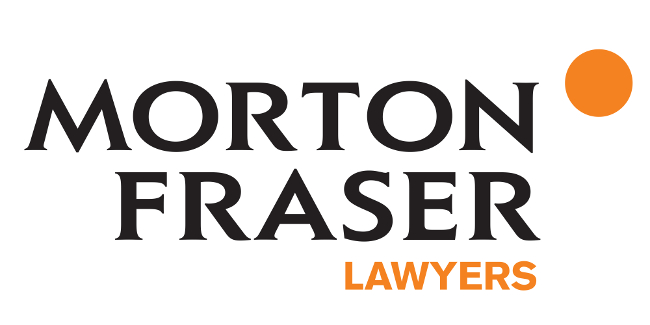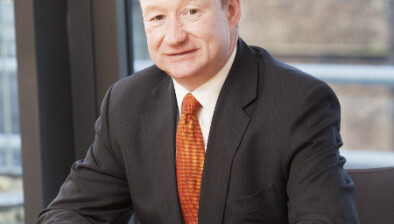Richard McMeeken: The law of bribery in Scotland

Richard McMeeken
Litigation lawyer Richard McMeeken discusses a recent decision involving a building contractor which has clarified certain aspects of the law of bribery in Scotland.
In Oil States Industries (UK) Limited v “S” Limited; Lagan Building Contractors Limited (in administration); John Hansen and Stuart Irwin, the joint administrators [2022] CSOH 52, the argument related to the development of a new office and production facilities for the pursuer. The first defender provided project management services and the second was appointed, in turn, as a building contractor.
Following the completion of the project, the pursuer sued the first defender for just under £12 million, £10.5m of which was founded on an allegation that the award of the building contract to the second defender was procured by bribery.
The bribery in question was said to be cash and free building services given to Paul Galbraith, a project manager employed by the first defender who was responsible for the procurement process and took the decision to appoint the second defender. The first defender claimed to know nothing about any bribes given to Mr Galbraith who no longer worked for them. The matter called before Lord Braid at a preliminary proof on the issue of the bribes alone.
The first question for the court was “What is a bribe”? The commercial judge considered that question with reference to both English and Scottish authority. In Hovenden & Sons v Milhoff [1900-3] All ER Rep 848, Romer LJ described a bribe as “a gift to a confidential agent with the view of inducing the agent to act in favour of the donor in relation to transactions between the donor and the agent’s principal, and that gift is secret as between the donor and the agent, that is to say, without the knowledge and consent of the principal”.
The essential ingredients of the bribe are then outlined in another English case Airbus Operations Ltd v Withey [2014] EWHC 1126 (QB) and the commercial judge summarised these as being “(1) receipt of money or a valuable benefit (2) by a person who owes a fiduciary duty of loyalty to a principal with whom a donor wishes to transact business (3) which is kept secret from the principal and (4) which places the recipient in a position where his interest may potentially conflict with the fiduciary duty owed to his principal.
In relation to the Scottish position, the commercial judge referred to Gloag on Contract (2nd ed) at page 552 where the author states that “to give a commission to an agent in the knowledge that he is taking it without the principal’s consent, amounts to a fraud on the part of the person who gives it, for which he is liable in damages”.
The commercial judge then went on to look at the law on bribery in more depth in England and considered the extent to which English and Scots law were aligned on the issue. In England, as he explained, there is no doubt that bribery is a cause of action in itself and that proof of fraud is not required (Grant and Mumford, Civil Fraud (1st ed) at 7-013; Lindsell on Torts (23rd ed) at 17.58).
There are two relevant consequences of this. First, the court doesn’t enquire into motive. Secondly, there is an irrebuttable presumption that the agent was influenced by the bribe. But to what extent are the English principles applicable in Scotland and indeed is bribery a cause of action in itself in this jurisdiction or is fraud required? Senior counsel for the pursuer submitted to the court that there was no reason for Scots law not to develop along the same lines as English law.
The same considerations applied to the circumstances in which a fiduciary relationship arose; Gloag relied on English authority in his text and there was no obvious policy reason for treating bribery different in the two jurisdictions. The defender, on the other hand, considered that the reference in Gloag to bribery made clear that it was just a “species of fraud and therefore that the essential ingredients of fraud and, in particular, mens rea, must be proved”. Further, in the present case, it must also be proved that the bribe induced Mr Galbraith to award the contract to the second defender - there was no presumption of influence as there was in England.
The commercial judge took as his starting point the fact that Gloag relied upon English authority and that the remedies in Scotland and England were the same. If he had considered that there were differences in relation to bribery then he would presumably have said so. The commercial judge also points out that the rule against secret profits, including bribes, derives from the existence of a fiduciary relationship as it does in England. Whether a fiduciary relationship exists is, again like England, fact specific and the categories of fiduciary can apply to a number of relationships (MacRoberts LLP v McCrindle Group 2017 SC 1 per Lord Brodie).
Drawing all of this together the commercial judge concluded that bribery in each jurisdiction is underpinned by the same principles and that “there is no distinction between English and Scots law in the treatment of bribery”. For that reason, there was no requirement to prove the mens rea of fraud and the sound policy reasons for the irrebuttable presumption of influence in England also exist in Scotland. Bribery is, in Scotland, “a free-standing cause of action, distinct from any cause of action arising out of fraud, and that once payment of the bribe is established, it is to be irrebuttably presumed that the recipient was influenced by its payment”.
The commercial judge then considered the evidence in depth which was, as is common in a case of this nature, of variable quality. Two interesting questions arose on the consideration of the evidence. First, what was the standard of proof - i.e. to what extent is cogent and compelling evidence required before the court can conclude that there was a bribe. Secondly, a number of witnesses were not called to give evidence including the major players in payment and receipt of the bribes. An important question arose as to which party ought to bear the consequences of that failure, with each party arguing that it was a problem for the other.
In relation to the standard of proof, the parties were agreed that the case had to be decided on the balance of probabilities (Mulan v Anderson 1993 SLT 835). The submission made by the first defender, however, was that the payment of bribes by businessmen was “inherently improbable”. Lord Braid disagreed. He started by expanding on an analogy given by Lord Hoffmann in Secretary of State for the Home Department v Rehman [2003] 1 AC 153 where he had explained that while the sighting of a lioness in Regent’s Park might be inherently improbable, it would be less so if a lioness was known to have escaped from London Zoo a short time before.
Lord Braid adapted that analogy to the present case explaining that the existence of an email between the relevant parties which said “starter for ten…we get sweeties for making it happen” (a clear reference to a bribe) removed any inherent improbability that otherwise may have existed. Lord Braid also pointed out that Mr Galbraith’s subsequent conviction and imprisonment for a separate fraud reduced the improbability of it all.
Senior counsel for the first defender also argued that much of the evidence heard had been hearsay and, while that was competent, it should not be afforded any weight by the court. The best evidence rule required direct, not indirect evidence. The commercial judge did not agree. He relied on Scottish Ministers v Stirton 2014 SC 218 in which the Lord Carloway (then Lord Justice Clerk) had held that “where the alleged facts are inherently improbable it may be more difficult to prove they are more probable than not, but proof of unlawful conduct does not fall into any special category and there is no presumption that serious crime is inherently improbable”. Therefore, there was no legal basis for accepting the first defender’s submission to the effect that bribery was improbable nor that the approach to proving it should be different from the approach to proving any other essential fact in a case.
In relation to best evidence, the Dean of Faculty, for the pursuer, explained that it was merely an exclusionary rule which in some circumstances precluded the admission of evidence which was not the best evidence (such as oral testimony about a written contract known to exist). It was not a rule which literally required a party to lead the “best” evidence before a particular fact can be held to be proved. The commercial judge agreed. While hearsay evidence had to be approached cautiously, there was no basis for suggesting that no weight should be attached to it.
Hearsay evidence can be corroborated by other evidence and, where that happens, it may be more likely than not that it is true. Accordingly, the commercial judge accepted that hearsay statements were available as adminicles of evidence. Lord Braid also explained that he did not accept the assumption made by the first defender’s senior counsel that direct evidence is necessarily “better” than indirect evidence. In an interesting passage he related the question to the standard written direction to juries in criminal trials. That instruction, he explained included a direction that “where circumstantial evidence is based on accurate observation, it can be powerful in its effect. Individually each fact may establish very little but in combination they may justify the conclusion that the accused committed the crime charged”.
He went on to say that “Substituting “accurate observation” with “contemporaneous documentation”, that applies with equal or great force to the present case. It has long been recognised that evidence of contemporaneous documentation is a better means of getting at the truth than oral testimony…”. The emails in the present case were extremely persuasive as were other internal documents and witness testimony about these may not have added very much.
As regards the failure to call witnesses, Lord Braid explained that there was “no requirement on a pursuer to lead direct evidence. If it chooses to peril its case on circumstantial evidence, it may do so. If the facts proved give rise to a presumption that the facts necessary for success exist, the evidential burden of proof will shift to the defender, who must either lead evidence to rebut the presumption against him or fail in the action or issue of fact in question (Walker and Walker, The Law of Evidence in Scotland (5th ed) para 2.6.1)”.
That is a helpful reminder from the court as to the leading of evidence and how the evidential burden can shift as proof progresses. Lord Braid concluded that, as a result, no adverse inference could be drawn from the pursuer’s failure to call an alleged wrongdoer as a witness. Of course, failing to do so may be seen as a risk if there is a lack of other supporting evidence, but that’s a separate matter. Similarly, there is no inherent unfairness in Mr Galbraith not being present as the court could make no finding in this action that would bind them in any future proceedings in which they would be involved. The pursuer’s case is not that there was criminality but rather that there were bribes, being a type of secret profit and founding a civil claim.
The failure of the first defender to lead certain witnesses gave rise to more difficult legal questions. The court observed that it might lead it to draw negative inferences against a defender who has not led sufficient evidence to discharge any evidential burden that has shifted to it. In the present case, it was difficult to say which witnesses were available to give evidence. The witnesses in question were not “under the first defender’s control, so to speak” and there was no way of the first defender knowing what they would have said in evidence. Accordingly, this was not a case where an adverse inference could be drawn as a result of them not having been cited to attend.
Following that analysis the commercial judge then set out his conclusions on the evidence which, he said, led to a strong inference “not only that benefits were given to Mr Galbraith but that they induced him to award the contract to the second defender”. Although proof of fraud is not required, the commercial judge held that Mr Galbraith did have the requisite mens rea for fraud which was inferred from his actings viewed as a whole.
There was no question in the commercial judge’s mind that the payments, and benefits in kind, amounted, in law, to secret profits or bribes. The question was whether the first defender was vicariously liable for Mr Galbraith’s actions in accepting bribes. The commercial judge concluded that it was. Both Mr Galbraith and the first defender owed a fiduciary duty to the pursuer and in awarding the contract to the second defender, Mr Galbraith was carrying out work that he had been authorised to do, just in an unauthorised way. The connection between his wrongful act and employment was so close that it was fair and just to hold the first defender liable for payment of the bribes.
This judgment sets out an important principle in relation to bribery as a cause of action in Scotland and contains helpful guidance for practitioners on evidential matters and particularly the quality of evidence required and standard of proof. It will be interesting to see whether, given the novelty of some of the issues involved, the unsuccessful party takes it any further.

Richard McMeeken is a partner in Morton Fraser’s Litigation and Dispute Resolution team
















